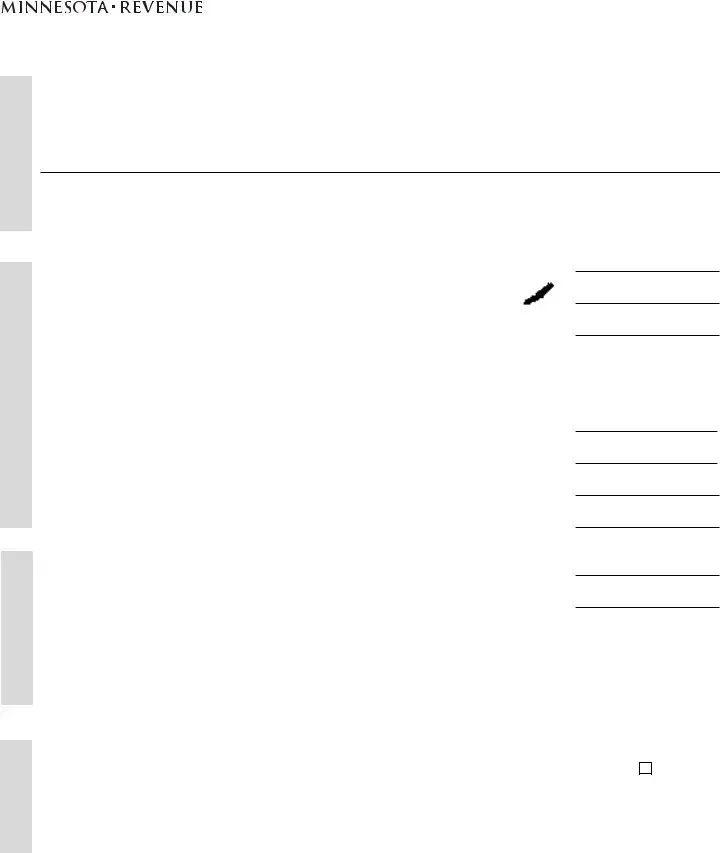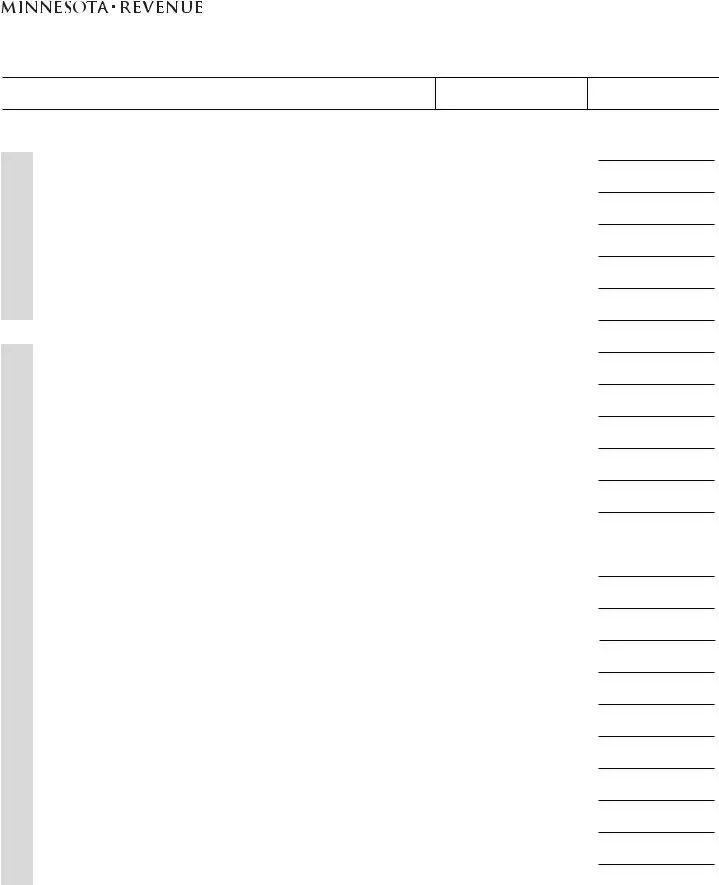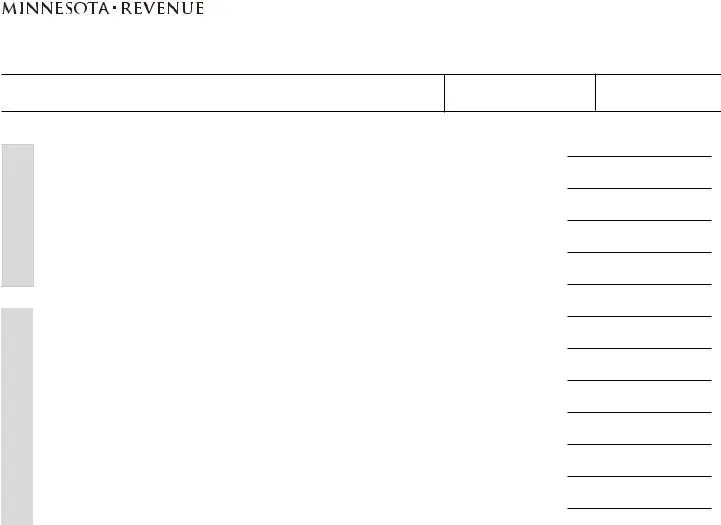The Minnesota M30 form, in its essence, functions similarly to the U.S. Corporation Income Tax Return (IRS Form 1120). Both forms require detailed financial information from companies, including gross income, deductions, and net income. While the IRS Form 1120 is for federal tax purposes, the Minnesota M30 serves the state's tax obligations, focusing particularly on the occupation tax. The requirement to list income, deductions, and calculate tax liability based on this information is a uniform aspect between them, making the M30 a state-level counterpart to the federal form.
Another comparable document is the Schedule K-1 (Form 1065), which is used for reporting the share of income, deductions, credits, etc., of each partner of a partnership. Like the M30's sections that require detailing income and deductions to determine tax liability, Schedule K-1 deals with allocating these figures among partners. However, the M30 focuses on the company as a single entity, while Schedule K-1 distributes financial details among individuals or entities in a partnership.
The Minnesota M30 also shares similarities with the State Business Tax Return forms that are filed in other states. While each state has its own name and specific requirements for their business tax forms, they all serve the purpose of calculating state tax liability based on income, similar to the M30. These forms, like the M30, include spaces for reporting income, deductions, tax credits, and payments. The primary difference lies in state-specific tax rates, credits, and exemptions.The U.S. Return of Partnership Income (IRS Form 1065) also parallels the M30 in its structure of income and deduction reporting. While Form 1065 is for partnerships at the federal level, detailing operational financial activities, the M30 accomplishes a similar task for individual corporations on the state level in Minnesota, aiming to ascertain the appropriate occupation tax.
Form M30X, referred to in the M30 instructions for reporting changes in tax due to federal adjustments, is conceptually similar to the IRS Form 1040X, which is the Amended U.S. Individual Income Tax Return. Both forms are designed to correct or update previous submissions, whether it be for an individual or a corporation. The necessity for such forms arises from the inevitability of amendments to previously filed returns due to errors, omissions, or changes following federal audits.
The Alternative Minimum Tax form for corporations (IRS Form 4626) is another document sharing a conceptual bond with parts of the M30. Similar to the M30's section on alternative minimum tax, Form 4626 is used at the federal level to calculate this tax for corporations, ensuring that they pay at least a minimum amount of tax if they benefit excessively from certain deductions and credits. Both documents ensure entities contribute a fair share of taxes, preventing overuse of tax benefits.
Lastly, the M30's requirement for companies to report adjustments following a federal examination mirrors the function of the IRS Form 5471, Information Return of U.T.S. Persons With Respect to Certain Foreign Corporations. Though Form 5471 is more specific in scope, focusing on foreign corporations, the underlying purpose of reporting changes in tax liability due to adjustments—whether international or domestic—draws a parallel between these documents. Both forms ensure that tax obligations reflect the accurate financial position post-audit or examination.



